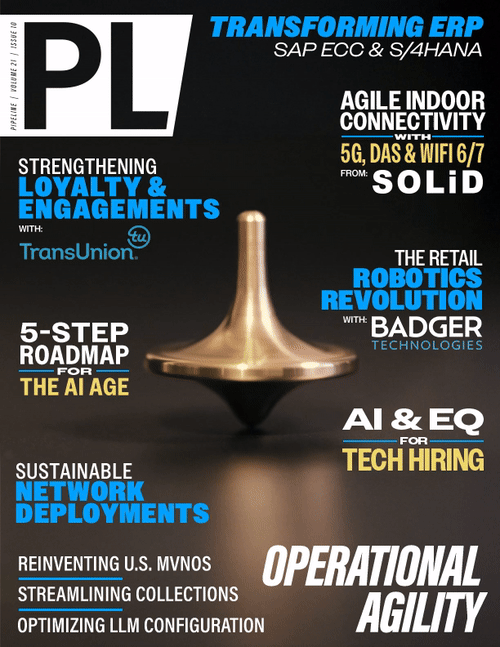How Connectivity at the Edge
Streamlines Operational Agility
By: Slavko Djukic, VP Product Line Management & Technology - SOLiD Americas

Today's businesses need to be more agile than ever before. Under pressure from rising costs, increasing competition, and global supply chain constraints, a business’s profitability hinges on the ability to quickly adapt and innovate. In today’s hyper-connected digital world, achieving operational agility requires the capability for employees, devices, and safety personnel to stay connected at all times — everywhere — throughout buildings and across campuses.
This always-on, in-building voice and data connectivity is critical for businesses and public institutions to maximize efficiency and productivity, as well as optimize the guest experience. Unfortunately, modern buildings and energy-efficient Leadership in Energy and Environmental Design (LEED) certified materials tend to block 5G and LTE radio frequency (RF) signals from outside, while also restricting signal propagation indoors. As a result, organizations frequently experience dropped calls, lost data connections, and poor quality of experience (QoE), ultimately leading to lost business.
Intelligent Operations
Increasingly, enterprises are leveraging the efficiencies that 5G and 4G bring to their business operations. In addition to providing mobile coverage for employees, customers, and guests, network managers also need to consider device connectivity requirements when making strategic investments. For example, a growing number of industries are adopting Internet of Things (IoT) and artificial intelligence (AI)-powered applications to achieve peak efficiency, from Industry 5.0 automation and real-time inventory tracking to streamlining guest services in hospitality operations, such as mobile keys and ordering room service.
Beyond just offering basic voice and data connectivity, many businesses are increasing reliance on cloud-based applications at the edge of the network as well. Bringing the cloud closer to devices and users in this way helps reduce latency and improve responsiveness, particularly for applications that benefit from real-time processing. Likewise, property managers are increasingly relying on digital automation to optimize property operations, such as controlling security cameras, lighting, smart thermostats, and other building systems.
Regardless of the specific use case, in-building networking plans should ensure plenty of bandwidth for smart devices and operational teams. Yet, the ability to maximize operational agility doesn’t necessarily require deployment of the latest and greatest 5G technology. For many smaller enterprises, the performance, speed, and latency of 4G in-building coverage are sufficient.
The Power of Connectivity
To ensure reliable coverage everywhere, building owners and network operators typically install in-building communications technology to deliver mobile connectivity directly to users indoors, where up to 80 percent of all mobile data traffic occurs, according to Ericsson. In some cases, such as in retail shops or cafes, business owners may offer Wi-Fi service to their customers. However, despite promises of improved performance with the latest standards, such as Wi-Fi 6 and 7, this technology still faces issues, including painful registration and login, security risks, and network congestion, particularly during large traffic surges at peak times. In addition to being inconvenient, this can also present safety concerns, particularly during emergency situations.
Upgrade Options
While these advanced applications provide considerable ease of use and efficiency, making the transition to the latest mobile technology may require some DAS changes with certain legacy
neutral-host platforms. With global 5G connections predicted to reach 8
billion by 2029, mobile network operators are adopting new 5G RF spectrum whenever possible to keep pace with demand for coverage and capacity. But legacy DAS architecture is often
unable to support new frequencies without equipment updates or changes. When upgrading non-modular systems to 5G, for example,



















